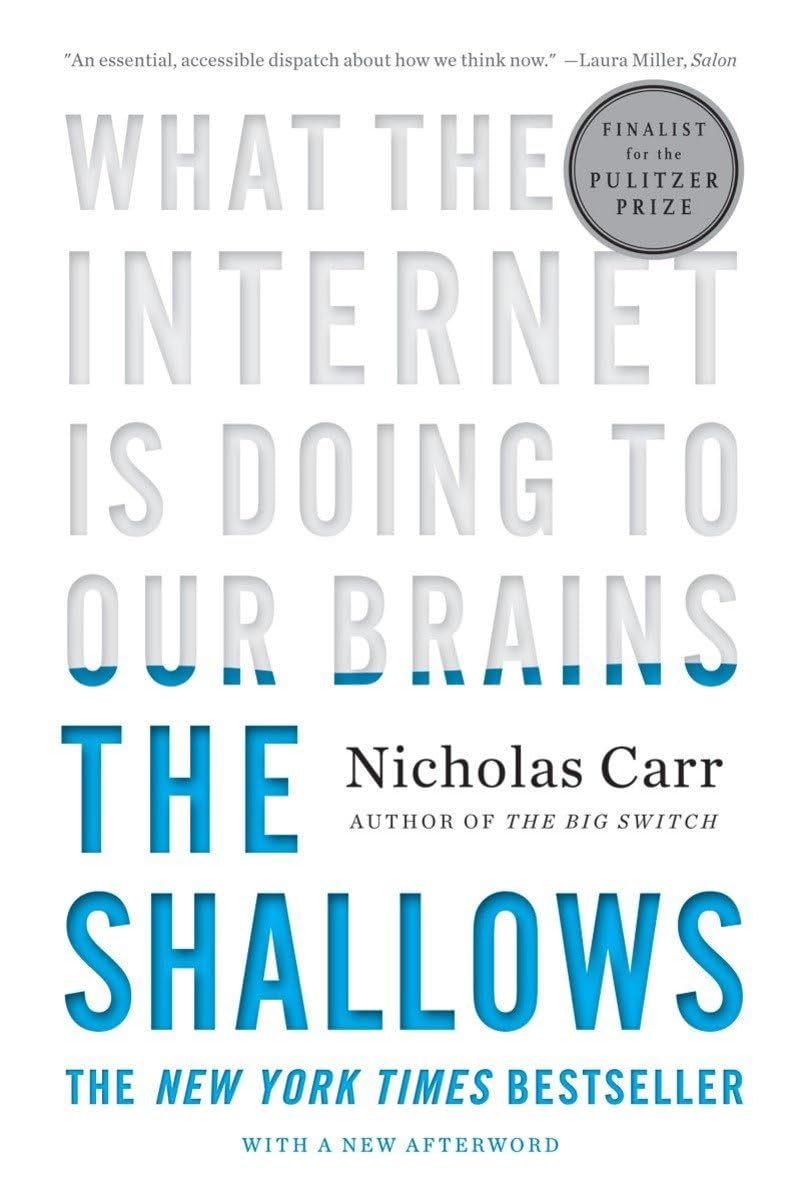
[this is the second article in which I have wielded kobogarden differently to construct a map of ideas the book left me. The full list of book highlights can be found here.]
This book appeared in the context of my inquiries into ADHD and tangential ailments of the modern age (diminished (deep) focus, sensory and intellectual overload, the omnipresence of the internet, etc). Some of this I would already be aware of via Cal Newport, for example, but The Shallows paints a broader picture by briefly looking at the history and influence of various media (oral communication, the written word, books, and the Internet), raising poigant arguments that interweave nicely with other concerns. There are overlaps with the latter Jerry Mander's book Four Arguments for the Elimination of Television.
Some of the main points:
— as stated by McLuhan in his Understanding Media: The Extensions of Man, it is important to consider the medium in itself if there is an intention to study its effects. And thus, we first tackle the concept of linear mind, later to explore how it contributes to human change.
— assuming we are a product of our tools, a brief study of our arsenal and how it changed us. The map and the clock are introduced as having permanently shifted how we perceive the world, while some other technologies influence our use of language, which is arguably the primary vessel for thought; such is the case with the written word, whose progress is broadly mapped from the ancient Greeks to the almost-contemporary Nietszche, who admits having changed his writing with the introduction of the typewriter.
— after this preliminary exposition of tooling, we hover closer to the Internet. First, it is stated that we are most likely reading more, albeit less in paper, and a more thorough study of the internet follows, interweaving its most salient characteristic: the hypertext. The internet appropriates other media, radically shifting our interaction with its content, promoting a shallower interaction with the barrage of information. This not only refrains us from distanced, profound thinking (similar arguments in Cal Newport), it brings us closer to the state of information overload, whose symptoms are very near to those of ADHD. There is no shying away from the point that hypertext is more taxing on successful cognition that regular text. We are, in fact, reading differently.
— it is then clear that our relationship with information changes, seemingly irreversibly. Could we, then, be optimistic — as in, maybe this hyper-connectivity, hyper-stimulated environment brings some positive change? Multi-tasking, for example, is elegantly condensed in a Seneca quote. In fact, some argue that multitasking, in its resistance to deep thought, is the antithesis to creativity; and that while are some very clear benefits of the digital age (better hand-eye coordination, for example, from the use of videogames), its impact doesn't necessarily transfer to other (arguably more meaningful) areas. Combine this with the strong neuroplasticity argument and we have a bleak portrait of our condition.
— later on, the Internet is viewed from the standpoint of Google and its information-as-currency attitude, leading to our current era of knowledge work; thus, the need arises for a more intelligent way of handling such big amounts of information, and, lo and behold, a proto-definition of hypertext, Zettelkasten, paogarden, and all (although the author recognizes that it is a solution to its own problem. A more naively optimistic perspective comes hailing from the words of Erasmus, unknowingly defining something like a thought garden; and Seneca saw it, too. In fact, such a notebook was called the commonplace, and its practice obviously precedes the information age.
| Title | The Shallows |
|---|---|
| Author | Nicholas Carr |
| Publisher | W. W. Norton & Company |